-
Posts
433 -
Joined
-
Last visited
-
Days Won
3
Content Type
Profiles
Forums
Resource Library
Events
Gallery
Blogs
Store
Community Map
Posts posted by Lambeg man
-
-
On 1/4/2017 at 11:46 AM, jhb171achill said:
Senior went in there on the last weedspray (which he organised).
There was an IRRS special along the rump Dundalk-Cavan section about 1959, just before it closed. It was an AEC railcar. I wonder if it went there.....I don't think do, but possibly.....
It'll be sixty years this September since Stormont's greatest act of vandalism in forcing so much of the GNR to close.
No John, that 1959 IRRS Special did not visit Cootehill. The branch line was lifted circa 1956. See photo of Shantonagh Junction in the 2003 re-vamped Patterson book GNR(I).
-
Yes I agree, but not the "Duty Solictor" he got at the police station, sounds more like a "civil litigation" expert/"PR consultant". You would be amazed how quickly these people appear out of the woodwork in a high media interest story like this. The Rod Stewart angle makes it just so compelling for them.
If the four offenders have no previous criminal matters recorded against them, they will be eligible for a "Police Caution" (as per Home Office guidelines and the CPS "Code for Prosecutors"). They will earn a dis-closeable criminal record, but little else. Even though we all understand the full impact their actions had on the victims, the criminal justice system aims to seek what is best outcome to improve the behaviour of the youth offender.
To put them into court will achieve little as the magistrates' hands are tied in respect of previous conduct.
The Daily Mail did not publish their images (why?), to have done so would have put the paper in breach of legislation protecting the identity of ALL young people.
Come on, half of Stamford must know who they are. Unfortunately for them, currently, their actions (unlike the Daily Mails' print copy) are unlikely yet to be consigned to "yesterday's fish and chip paper".
-
 1
1
-
-
The first NIR "excursion" set was put together in 1970 with a mix of ex-NCC former steam hauled carriages. The set was painted up in NIR maroon with a silver/white waistband stripe and was hauled by a spare '101' class loco. It was replaced circa 1975 by an 8-car set of de-engined BUT power cars which lasted in this role until circa 1979/80. I am not 100% sure, but I think a former Brake/Second BUT trailer was also retained to act as the Brake vehicle for this latter set. Livery was the same as the initial set. Some photo's at the time show vehicles from this set operating in smaller sets of only 2 or 3 cars.
-
 3
3
-
-
I wonder if the person who supplied the vodka to these underage people, if he or she was a shop keeper, will be making a donation?
-
Gone to a good home.
-
To briefly return to my earlier comments about AEC Railcar cab fronts (I know, groooooan....), I attach a manufacturers' drawing and a photo:
It will be seen from the side view that the cab front does angle outwards at the center, then curve inward at the bottom. What may not have been apparent in my previous post was that looking downwards, one can see the amount of buffer beam that was exposed at the outer ends by the curvature of the cab front.

Note that this an AEC company drawing and all the window profiles are incorrect, certainly for the GNR railcars, as they were squared at the corners on the finished product.
Also missing from the drawing are the grab handles on the cab front, just below the cab windows and the two lamp irons on the buffer beam, as seen in this photo.

Has anyone a suggestion as to how one might construct a correctly fashioned AEC cab front that could be retro fitted to an aspiring model of one these vehicles?
-
 2
2
-
 2
2
-
-
Hi Tony,
First a 1961/62 timetable map showing bus services emanating from Omagh, than a list of services from the index.

Table No. 6 is the Belfast - Omagh - Derry Rail service, the others are all long distance bus routes.
As to the "Bus Service No." -
61: Belfast-Enniskillen (via the Clougher Valley) so not sure why it is listed against Omagh. 75: Omagh-Belfast (via Ballygawley). 86: Omagh-Dungannon. 87: Omagh-Fintona. 88: Omagh-Cashel Bridge. 92: Omagh-Cookstown. 93: Omagh-Gortfin. 94: Omagh-Bundoran. 95: Does not originate from Omagh 96: Omagh-Castlederg. 98: Omagh-Derry.
Trust this is of some use.
Regards
Steve
-
 1
1
-
-
An AEC Railcar set (GNR of course), but with the correct profile for the front cab, outward angled middle window bar, bottom of cab windows angled backwards, gentle but pronounced curve along the cab lower panel........ On most most models seen to date (INCLUDING MY OWN!) the front profile is too flat.

Oh, and a RTR 'WT'..... er, that's it!
-
 3
3
-
-
Since I've had no response to my offer of a swap, I am now offering the said item for sale. Any reasonable offer considered.
00 scale Murphys Models Craven 'Snack Bar' carriage for sale. Still in the original box with the extras. It is in the later CIE livery.
PM me with any proposal.
-
As a new member I was not posting when this thread was started, but I did read it and responded directly to Kirley. I would therefore like to take this opportunity to place some further comment to several of the above posts.
Trials with the initial "Enterprise" set began in April 1957 and the set consisted of power cars 701, 702 and 703. The three trailers cars were a D 5 (Brake/First), a C 2 (All First) and between them the B 9 Buffet car. Initially only the outer ends of the C 2 and the D 5 had BUT type corridor connections, as the Buffet car retained conventional 'concertina' connections. Not doubt this was the catering department saying "Okay, take the B 9 for trials, but leave the corridor connections on it in case we need it back before the train enters service."
It is unclear from my research what the motive was to use the “continental” style large rubber corridor connections on these cars and their trailer vehicles, other than it would allow for quick coupling and uncoupling, as the outer faces of the connection simply pressed together when the vehicles were marshalled together. Was there some grand plan that BUT type trains would divide en-route, e.g. one complete train leaving Belfast or Dublin to serve two destinations? In the event the fitting of this type of connection prevented the safe use of BUT cars (especially the trailers), in a train composed of any other rolling stock.
IRN reported that following an inaugural run for the press on Tuesday 4/6/57, on Wednesday 19/6/58 the first 6-car set entered traffic on the Belfast based “Enterprise”. IRN gave the formation as being 703-225-232-124-176-702-701. In fact the correct formation was 703-226 (not 225)-232-124-702-701. It is highly probable that 176 (a K 15 Second) with power car 704 were added in either late June or early July of the same year, taking the set up to the maximum operating ratio of 4 power cars and 4 trailers.
By the time the BUT cars were being introduced, the Northern Ireland government (despite having put up half the money for them), had already decided to close large sections of the GNR within their province. In a perhaps somewhat vague idea that political minds could be changed, the GNR hit on an idea to show the improved service levels and economy these new Railcars could provide. Having produced the initial four power cars that went into the Belfast based “Enterprise” set, No. 705 was completed in July 1957 with nothing to run with. It was therefore deployed on Monday 22/7/57 on a new service, the “Enniskillen Express”. Having no formal decoration, this set comprised of the said BUT power car towing a wooden panelled Brake/Second carriage classified D 3. It left Enniskillen at 08.50 and called at Bundoran Junction to connect with a service from there and was scheduled to be in Omagh at 09.35. Ten minutes were allowed for the Railcar to run around the trailer car and after a pause at Carrickmore, it reached Belfast at 11.20, shaving 65 minutes of the best previous schedule. The return journey started at 19.00 from Belfast non-stop to Omagh, thence again non-stop to Enniskillen, arriving at 21.05. This effort had no impact on the decision makers and the closures went ahead, the service ceasing on 30th September 1957. It is unclear if the D 3 was fitted with BUT corridor connections at this time, but it certainly had them when photographed at Mallow in 1989!
What may be of interest are other reports concerning the BUT Railcars which featured in IRN over the period from September 1957 up to the dissolution of the GNR(B) in September 1958. By 1st October 1957 passenger services (with minor exception), had ceased on the Portadown to Cavan and the Dundalk to Omagh via Enniskillen lines, as well as on any branch lines that still functioned on these two routes. For the new BUT Railcars, their main deployment now would be on Belfast-Dublin and Belfast-Londonderry services.
IRN reported that on Tuesday 1/10/57 a BUT set was introduced on the 11.15 ex-Belfast and 16.10 ex-Derry return. The set comprised No’s 707-232-708-267-706-705. On arrival back in Belfast, the first three cars were detached from the rear section (which had the Buffet car No. 267) and operated back to Derry at 20.05. From there they returned at 07.15 the next morning and married up with remainder of the set in Belfast.
In July 1958 it was reported that the 08.45 Dublin-Omagh was a BUT set, which detached the rear portion (including the Buffet car) at Omagh. The front portion ran on to Strabane (due 12.38) where a steam train provided a connection to Derry. The 08.25 Belfast-Derry had detached its rear portion (including the Buffet car) at Strabane (due 10.47). These two BUT portions then combined to form a 13.38 ex-Strabane to Belfast. Meanwhile the front portion of the 08.25 left Derry at 11.55 and joined the rear portion of the 08.45 ex-Dublin at Omagh and ran to Dublin where it then operated a local service as one train. The set was then separated and front portion of what started the day as the 08.25 ex-Belfast worked the 02.15 Dublin-Belfast newspaper train. [If the front portion of the 08.25 did indeed work the Newspaper Train, what was not explained was how the original front portion of the 08.45 returned to Dublin from Belfast!]
In total 16 of the '700' series power cars were produced up to May 1958, production switching to the '900' series with full single end cabs. On 10/7/58 No. 901 entered service on the Belfast based “Enterprise” set, to be joined by No. 902 at the other end on the 12/7/58. On the 8/9/58 the Dublin based “Enterprise” went over to BUT operation with two '900' cars at each end of a four car set, obviously replacing an AEC set on that duty. A total of 8 of the '900' series were produced up October 1958, the last two coming out after the dissolution of the GNR(B).
At the split of rolling stock, the UTA got 9 of the '700' (renumbered 121 to 129)and 5 of the '900' (renumbered 131 to 135) power cars, CIE (which did not renumber their allocation but added a 'C' prefix and an 'N' suffix to the GNR numbers) received the balance of 7 and 3. In total I have managed to track 25 trailer carriages that were fitted for BUT operation, some receiving internal alterations in the process.
Catering vehicles (all designated "Refreshment Cars"): 1 x B 6, 2 x B 8, 1 x B 9, 1 x B 10* (fitted by CIE in 1960) and 2 x K 23
Brake/First (all with heating plant installed): 2 x D 5* and 2 x F 16 (these being 1st/2nd side corridor composites prior to alteration, the last being done by CIE in 1961)
Brake/Second (all with a heating plant installed): 2 x L 12, 1 x L 13 and 3 x L 14
All First: 1 x C 2*
First/Second: 3 x F 16 and 1 x F 17
Second: 3 x K 15
All were 58' chassis, except those marked * which were 60' chassis. Each BUT set required at least one Brake vehicle for train heating purposes, so in GNR operations by September 1958 nine sets were theoretically possible.
When built, all the BUT cars and their trailers appeared in the GNR blue/white “Railcar” livery except for No. 908 which was produced, after the official dissolution of the GNR(B), from the Dundalk Works in the light green livery of CIÉ. Post 1958 CIÉ painted some of the cars into their light green livery, all eventually going into the CIÉ’s black/orange livery. CIÉ also fitted some cars with larger 2′ diameter buffers. Other than that, no changes were made to the original designs. CIÉ continued to use BUT Railcars for the Dublin based “Enterprise” and on 28/1/60 the service was formed of No’s 906-97-192-908. A fire broke out in No. 908, resulting in it and the Brake/2nd being burnt out. The service went over to diesel-electric locomotive haulage in 1961. Naturally CIÉ used BUT Railcars on local services out of Dublin, especially on outer workings to Dundalk. They were however also deployed on the former Dublin & South Eastern section, on workings to Wexford and Rosslare. As non-standard vehicles, the ranks were reduced by fires and other damage, to the extent that by 1970 only one set was still in regular use. However, in a rather surprising development, in 1974 CIÉ overhauled and repainted four of the '700' cars. Apparently they were intended to be used as solo units, one suggestion being they were to be used on the Loughrea branch. Whatever the original plan was, they never in fact re-entered service in any shape or form.
The original car that became UTA No. 129 was badly damaged by a fire at Castlebellingham on 12th May 1960. It was rebuilt by the UTA and re-entered service in early 1962. The rebuild had the body styling of the contemporaneous Multi-Purpose Diesel (MPD) Railcars still being built by the UTA at that time. One of the most notable differences was that the windows had curved corners, rather than the squared GNR type. With regard to the seating in the rebuild, this appears to have been provided by using high backed arm chair seats recovered from the First class sections of some UTA built Multi-Engined Diesel (MED) Railcars, in which some former First class sections had been reduced to Second class, with a revised seating type.
Initially the UTA were happy to just renumber the cars into their new list for Railcars, remove any GNR crests and apply their red hand roundel. Serious repainting of the BUT Railcars into the full UTA’s green livery did not commence until late in 1960. “Wasp” warning panels were applied to all Railcar ends with a driving cab. Roof level exhausts were fitted to all the power cars by the UTA.
The UTA's Belfast based “Enterprise” remained a BUT Railcar working right up to January 1969, when they were replaced by an NIR “70 class” DEMU set. In the early 1960's an 8-car formation topped and tailed by a '900' car appears to have been the norm, but by 1967 the set could down to 4 cars, a '900' leading out of Belfast, a Brake/First, a Buffet car (usually the B 6) and a '700' car trailing. Under the UTA, the BUT Railcars continued to operate most services on the Portadown-Londonderry line until that closed in February 1965. Any spare sets were used as available on local services out of Belfast. In the main these consisted of a '900' and a '700' at each end with a Brake/Second (3-car formation) or and additional First/Second (4-car formation). In the period between 1963 and 1965, the UTA also began a practice of operating a single '700' car on its own on some off-peak services to both Lisburn and as far as Portadown. The vehicle operating in this mode was termed a “doodlebug” by staff.
Also in 1965 the UTA introduced their 'regional' liveries and several BUT railcars went into the GN section livery of Riviera Blue and Cream. However some went directly from UTA 'green' to NIR Maroon/Grey from 1967 on. Another piecemeal alteration carried out by NIR on BUT Railcars was the gradual removal of the higher central headlight on both types of car. The BUT Railcars belonging to NIR finished their days of service working on Belfast-Lisburn-Portadown locals, but even by 1971 a set might have a trip to Dublin on a special. After withdrawal circa 1974, the engines of the '700' cars were removed and set of these de-engined cars was formed for use on locomotive hauled excursions. They were painted in an overall maroon livery with a grey band below the windows. After complete withdrawal in 1978, they had to be drowned in a quarry because of asbestos being present in the bodies.
I hope the above has been of some interest to those seeking to model these wonderful vehicles.
-
 2
2
-
 1
1
-
 2
2
-
-
-
Have just read through the original thread and very interesting it was. The "Courtaulds" wagons were refurbished in the wagon shop section of the Adelaide running shed from May 1964, 200 for "Courtaulds" traffic, 100 for the UTA's own purposes. (IRN).
A 'Jeep' working what presumably is a Courtaulds train at Greenisland. However as the brake van is next to the engine, it may be propelling the wagons up the 'Back' line. Unfortunately date and photographer UNKNOWN. However note the variety in height of the open wagons.
Does anyone know when the Courtaulds contract commenced?

Two wagons at Lisburn March 1971 - copied from a Jonathan Allen photograph
-
 1
1
-
 1
1
-
-
Ah, so if there was a bell communication between guard ("I've got the token.") to the driver, does my suggestion about the hatch in the bulkhead behind the driver, through which the guard passed the tablet, only apply to the GNR cars? There is no record of them ever having a tablet arm in the guard's compartment.
-
I think I can help you GLOVER.
Both the AEC (of GNR and CIE origin) Railcars had a low hatch in the center of the bulkhead between the first class section and the driving cab whereby the train guard manually collected the "staff" from the signalman and then walked through the train to deliver the staff through the hatch to the driver.
I stand to be corrected on this.
However, I for one have never seen a picture of a 'Railcar' (other than UTA/exNCC) with tablet 'snatchers' fitted.
-
Brilliant photo of No. 214. I think I am correct in saying that No colour photo of one of the ex-Railmotor Trailers has ever been published. I would stand corrected on that. No. 214 was the last of the classification K 9 to be withdrawn., clearly awaiting auction here.
-
28th April 1969 - The Brian Boru railtour visited Limerick.
-
Thank you for your compliment Glover, appreciated.
The renumbering by the GNR of numerous vans into the "700" series began in 1923 and carried on to 1925, the purpose being to lift 4-wheel Other Coaching Vehicles (OCV's), many of which were technically goods vans, out of the general (1 to 500) coaching list. 6-wheelers (i.e. 'W' vans) were not renumbered.
Yet the bogie 'P' vans were numbered into the "700" list (which actually ran up to 856) and pre-1930 withdrawals left the gaps that allowed the sequential numbering of these vans. Your phrase of "spin the wheel" was in most cases the GNR policy of simply back filling vacant numbers for the latest coach production.
-
 1
1
-
-
Just for the record -
In 1930 the first of a new type of GNR coaching vehicle appeared. They were the first bogie vehicles to have a Flat roof profile and were strictly parcel (and general merchandise) vans as no brake equipment for use by a guard was ever fitted. They were however fitted with continuous brakes and always ran attached to a passenger trains. In overall appearance they resembled American “Box” cars. Although never having been fitted with corridor connections, they had a through steam heating pipe which meant they could run at the front of a rake of passenger coaches, between them and the steam locomotive powering the train. There began a practice of reverse “leapfrogging” whereby one would leave a departure point attached to a passenger train and be dropped off at the next major station for unloading and loading. It would then be collected by a later service to take it on to the next stage of its journey.
The three members of classification P 1 were 48′ 0″ x 8′ 5″ over body and weighed 24½ tons. In terms of construction they had a timber body and timber under-framing. The 1936/44 GNR coaching books show the loading capacity as 20 tons. All were built in 1930, were numbered 779 to 781 and all passed to CIÉ. By 4/59 No. 799 was reported painted in CIÉ’s green livery. Around 1963 No. 780 was painted in the CIÉ black/orange livery and was withdrawn in January 1973, the other two in March of the same year.
Classification P 2 were slightly different, being 47′ 6″ x 8′ 5″ over body and weighing 23 tons. The sliding doors were 6″ wider than the 5′ doors of classification P 1. In construction terms these had timber bodies but steel underframes. The 1936/44 coaching books show the loading capacity as 20 tons. No’s 783 to 788 were all built in 1934, a year when no other passenger stock was produced, the remainder appearing in 1944. The following table gives further information with regard to classification P 2.
Built
No.
Remarks
P’ 58
W’dn
1934
783
CIÉ
1/1973
1934
784
CIÉ
3/1973
1934
785
CIÉ
1/1973
1934
786
CIÉ
3/1973
1934
787
CIÉ
3/1973
1934
788
May have been refurbished by NIR circa 1970? To the RPSI.
N619
?/1979
1944
755
CIÉ
3/1973
1944
757
May have been refurbished by NIR circa 1970? Scrapped on withdrawal, the underframe went to the Downpatrick & County Down Railway group.
N618
?/1982
1944
777
CIÉ
3/1973
1944
778
CIÉ
3/1973
It will be seen that only TWO went to the UTA, the rest to CIE. Given the recorded withdrawal dates, it is highly probable that several if not all made it into the B/T livery.
I would be interested to see a photo of the NIR one's post 1970 to see what (if any) alterations were made to their body profile.
-
 2
2
-
-
56 minutes ago, leslie10646 said:
nor had I heard of the LQGs being called anything but "LQGs"
Hi Leslie,
Page 93 of Irish Railways in the 1950's and 1960's (by Kevin McCormack) shows LQG No. 164 with a 'D' power classification plate on the cab side. I think Laurence Liddle mentions them being referred to as "Big D's" either in his book or one in of his 5' 3" articles.
Excellent photographs Mayner
-
6 hours ago, Galteemore said:
Have also heard the WT class referred to as Mogul Tanks. And of course SG3s as Big Ds.
I believe class LQG were also known a "Big D's".
-
I have to say John that I remember hearing the term "Hampshires" banded about by several people (including some staff) after their introduction to the GN section in 1969. They were not named after "Rivers" until 1973 I think.
-
I have a Murphys Models Craven Snack Car in the later CIE livery (still in the box) that is surplus to requirements. Has anybody got something "Irish" (outline only would be sufficient) they no longer want and would be prepared to swap?
PM me for further details.
-
Hi All,
As a new member I have come late to this discussion, so apologies for resurrecting it so late in the day. From my own research I can offer an explanation regarding the steam Enterprise formation. There was an ancient instruction from the time of the druids that ANY train going either way over the Wellington bank had to have a Brake Van at the front AND the rear of the train. Why, when continuous automatic braking systems came into being, this order was still on the GNR's company statute book in the 1940's, I do not know. Certainly the pre-war main line Mail set had a Brake/3rd at the north end and a Brake/2nd at the south end.
I may be wrong, but have I read somewhere that the Enterprise had two guards? When the service was first introduced in 1947, there was a heating/cooking stove fitted in the Brake/3rd to supplement the "at seat service" from the Buffet Car, a hostess being employed for this.
The GNR did publish Coaching Roster booklets, the one I have is for 1924. However, as JHB has stated, rostered formations could be added to as traffic requirements demanded.
One other note is that in 1956/57 as the most modern flush-sided GNR carriages were gradually withdrawn to Dundalk to be fitted as BUT trailers, older 1920's built wooden panelled coaches became regular vehicles in normal day to day steam operated intercity services.
-
 1
1
-
-
"SPUTNICKS" for UTA built MPD Railcars and obviously "JEEPS" for the WT class 2-6-4T's. "MOGULS" for the tender version (W class) and "WHIPPETS" for a class/type of small boilered NCC 4-4-0's. Finally, "BLUEBIRDS" for the GNR(I) V class 4-4-0's.
.png.c363cdf5c3fb7955cd92a55eb6dbbae0.png)
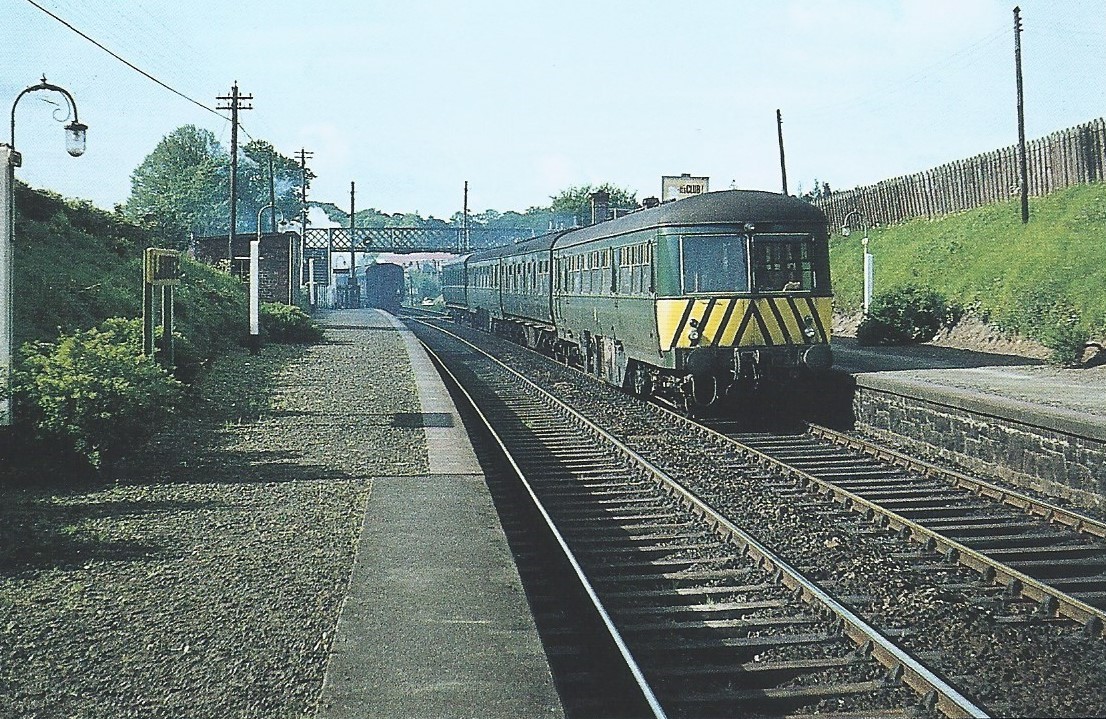
.thumb.jpg.619b7e43fcb01ddf7c110aacc1ea31d3.jpg)
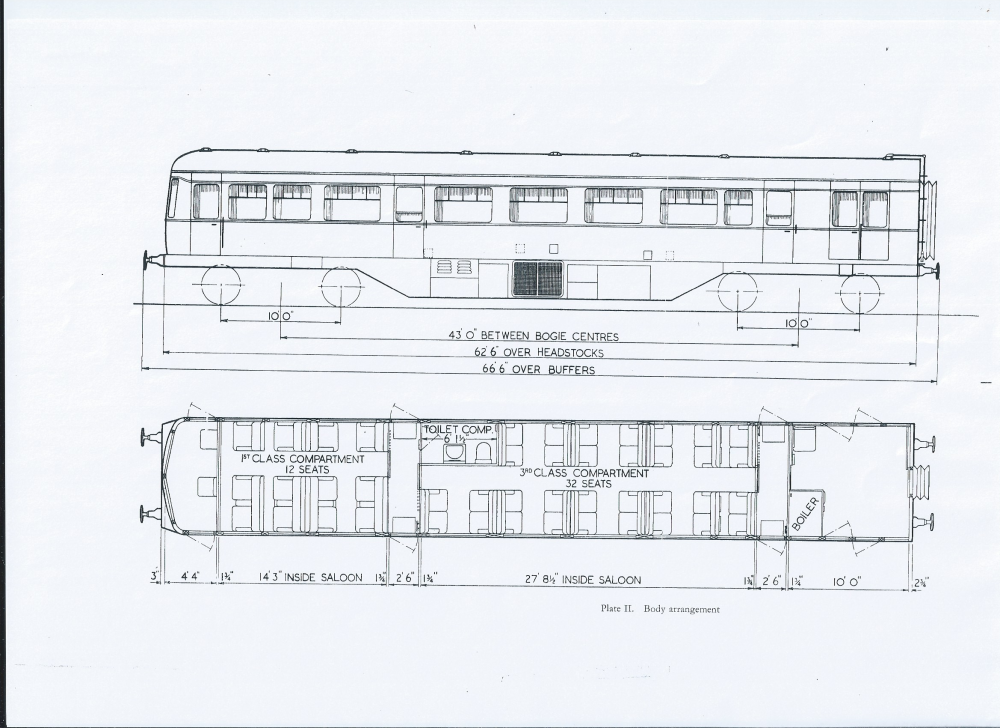

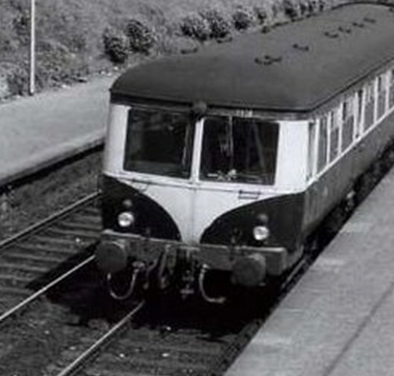
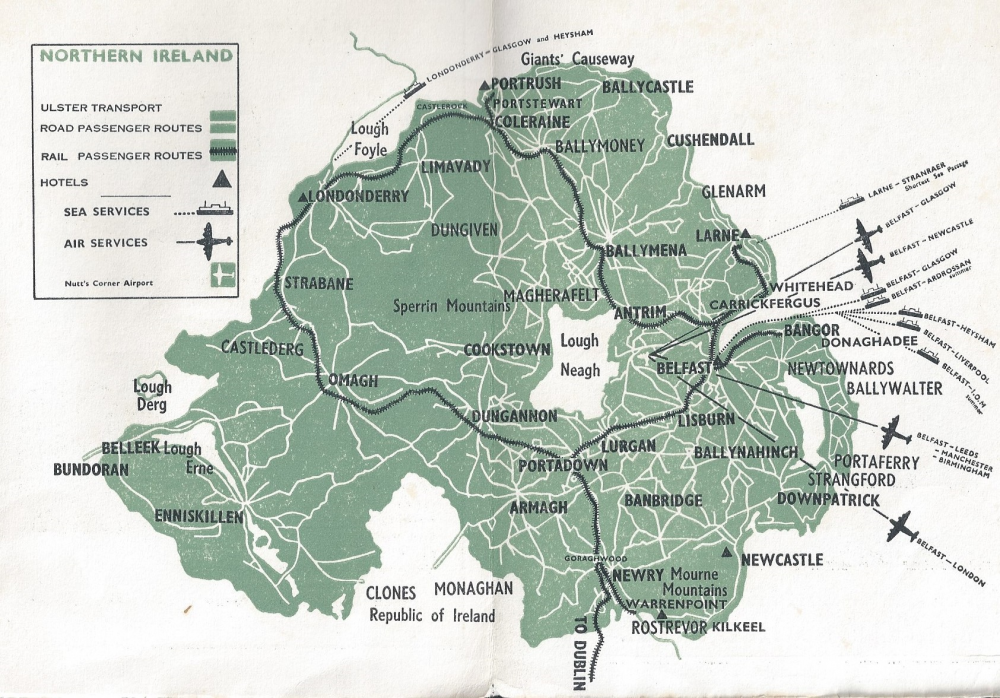
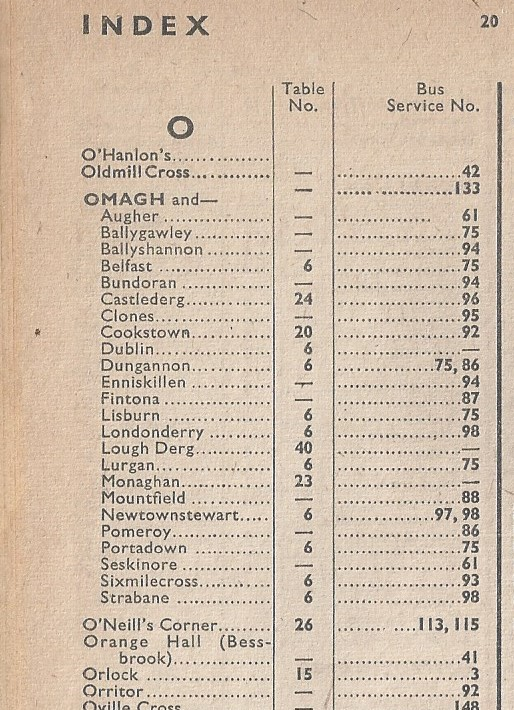
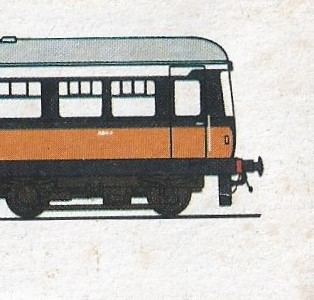
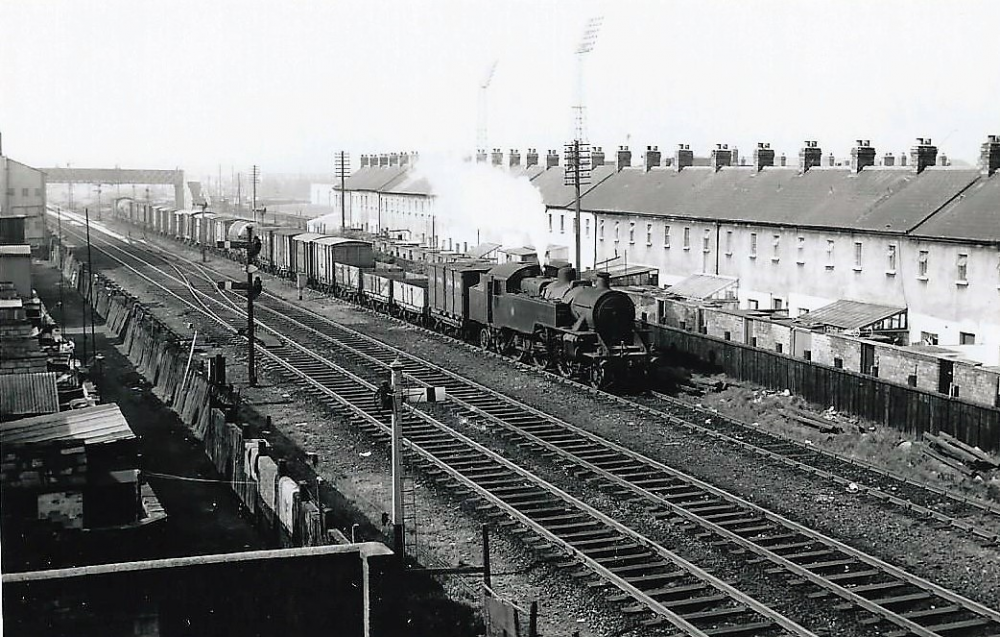
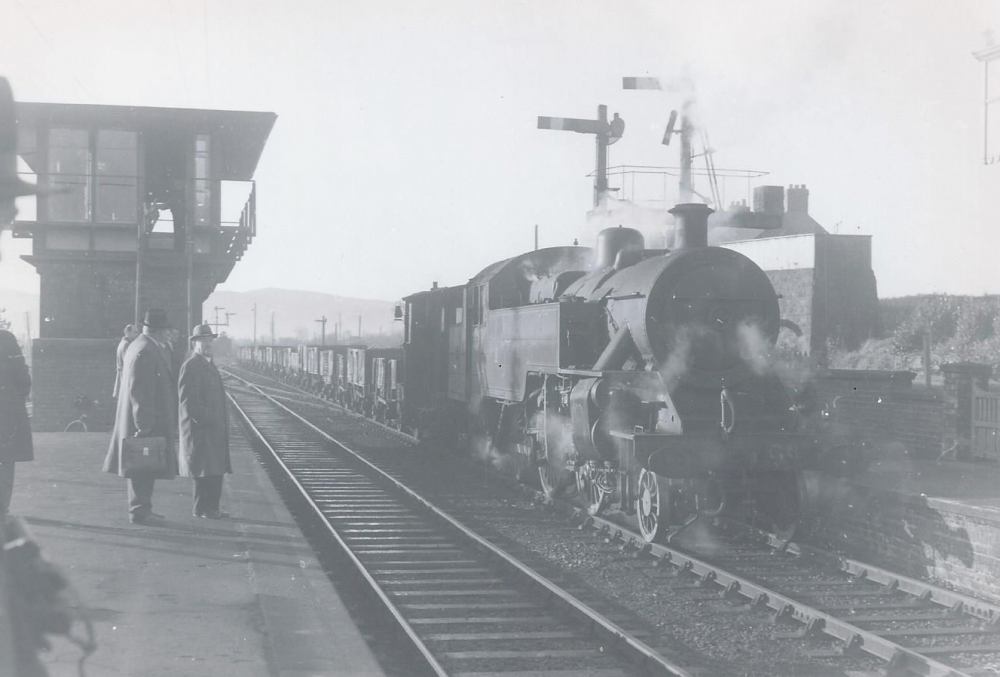

What closed lines have people been on?
in General Chat
Posted
Yes siree John, the IRRS special did go down to Carrickmacross. 19th December 1959 was the date and there is a nice John Langford colour photo of the special under the station roof on the back cover of New Irish Lines Vol 6, No. 6 (November 2013 edition).